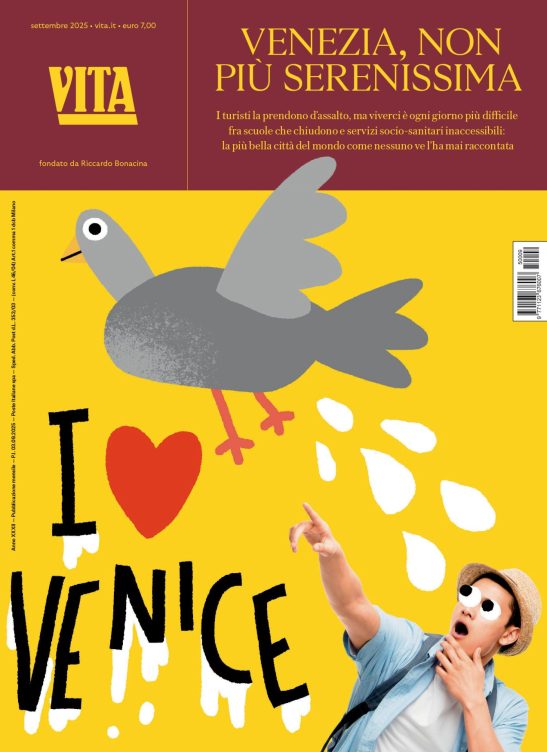Global: Press freedom losses outnumber gains in 2007
Global press freedom underwent a clear decline in 2007, with journalists struggling to work in increasingly hostile environments in almost every region in the world, says Freedom House
di Staff
Global press freedom underwent a clear decline in 2007, with journalists struggling to work in increasingly hostile environments in almost every region in the world, according to a new survey released by Freedom House. The decline in press freedom?which occurred in authoritarian countries and established democracies alike?continues a six-year negative trend.
Freedom House, a pro freedom NGO based in Washington, USA, has presented the findings in a report called Freedom of the Press 2008: A Global Survey of Media Independence. While the survey indicated that setbacks in press freedom outnumbered advances two to one globally, there was some improvement in the region with the least amount of press freedom: the Middle East and North Africa. The survey attributes the gains in the Middle East and North Africa to a growing number of journalists who were willing to challenge government restraints, a pushback trend seen in other regions as well.
"For every step forward in press freedom last year, there were two steps back," said Freedom House Executive Director Jennifer Windsor. "When press freedom is in retreat, it is an ominous sign that restrictions on other freedoms may soon follow. However, journalists in many countries of the world are pushing the boundaries, crossing the red-lines, demonstrating commitment and courage against great odds and we are seeing a greater global flow of information than ever before."
Out of 195 countries and territories, 72 (37 percent) were rated Free, 59 (30 percent) Partly Free, and 64 (33 percent) were Not Free, a decline from 2006. However, the study found that declines in individual countries and territories were often larger than in years past.
Key regional findings include:
- Central and Eastern Europe/ Former Soviet Union: This region showed the largest region-wide setback, with Russia, Georgia, and Kyrgyzstan, and several Central European countries, among others, showing declines. Only 18 percent of the region?s citizens live in environments with Free media.
- Middle East and North Africa: More unrestricted access to new media such as satellite television and the internet boosted press freedom regionally. Egyptian journalists showed an increased willingness to cross press freedom 'red lines,' moving the country into the Partly Free category.
- Asia-Pacific: Restrictions on media coverage were imposed in Pakistan, Bangladesh, and Sri Lanka, and Vietnam?s government cracked down on dissident writers.
- Americas: Guyana's status shifted from Free to Partly Free, while Mexico's score deteriorated by a further three points because of increased violence against journalists and impunity surrounding attacks on media.
- Sub-Saharan Africa: The region accounted for three of the year's five status changes: Benin declined from Free to Partly Free, while the Central African Republic and Niger moved into the Not Free category. Political conflict and misuse of libel laws were key factors behind a number of country declines.
- Western Europe: The region continued to have the highest level of press freedom worldwide, despite declines in Portugal, Malta and Turkey, the only country in the region ranked Partly Free.
The survey, released annually in advance of World Press Freedom Day on May 3, assesses the degree of print, broadcast, and internet freedom in every country in the world. The 2008 ratings are based on an assessment of the legal, political and economic environments in which journalists worked in 2007.
"Improvements in a small number of countries were far overshadowed by a continued, relentless assault on independent news media," said Karin Deutsch Karlekar, Freedom House senior researcher and managing editor of the survey. "We are particularly concerned that while abuses of press freedom continue unabated in restrictive environments such as China, threats are also apparent in countries with an established record of media freedom and in newer democracies in Central Europe and Africa."
The key trends that led to numerical movements in the study include:
- Unrest and Upheaval: Media played a key role in covering coups, states of emergency and contested elections in countries such as Pakistan, Bangladesh and Georgia, and as a result, journalists became prime targets during government crackdowns.
- Violence and Impunity: Violence against journalists and, in many cases, corresponding impunity regarding past cases of abuse was a key factor in determining press freedom in countries as diverse as Mexico, Russia and the Philippines.
- Punitive laws: Media freedom remains seriously constrained by the presence and use of numerous laws that are used to punish critical journalists and outlets.The abuse of libel laws increased in a number of countries, most notably in Africa.
New media:
- Satellite television and internet-based news and networking sources are an emerging force for openness in restricted media environments as well as a key target for government control.
The world's worst-rated countries continue to include Burma, Cuba, Libya, North Korea, and Turkmenistan. In 2007, Eritrea joined the ranks of these exceedingly bad performers, while a crackdown in Burma worsened that country?s already repressive media environment, leaving its score second only to that of North Korea worldwide.
Detailed country information, methodology and graphics from the survey are available online and by contacting Laura Ingalls at ingalls@freedomhouse.org.
Vuoi accedere all'archivio di VITA?
Con un abbonamento annuale potrai sfogliare più di 50 numeri del nostro magazine, da gennaio 2020 ad oggi: ogni numero una storia sempre attuale. Oltre a tutti i contenuti extra come le newsletter tematiche, i podcast, le infografiche e gli approfondimenti.
